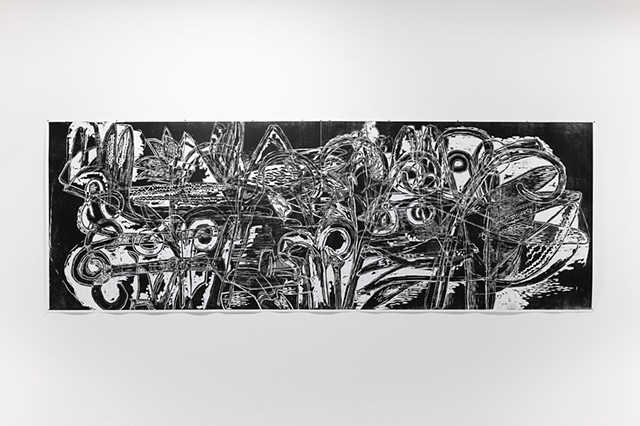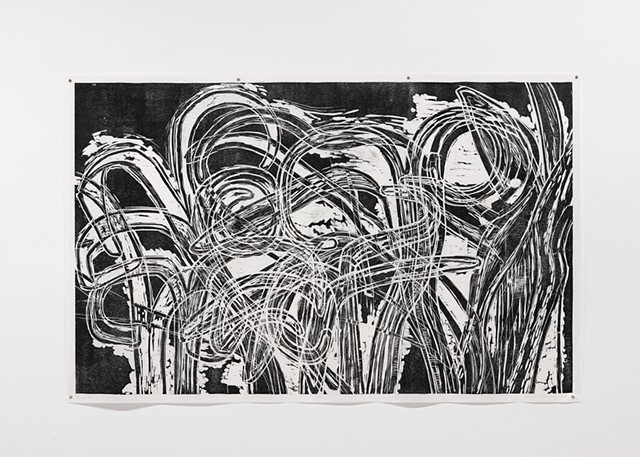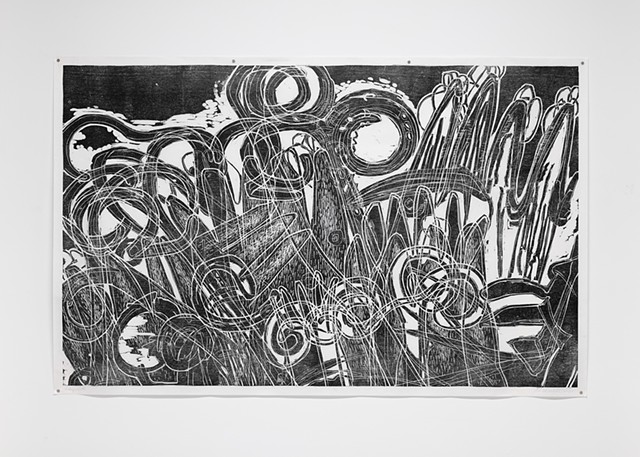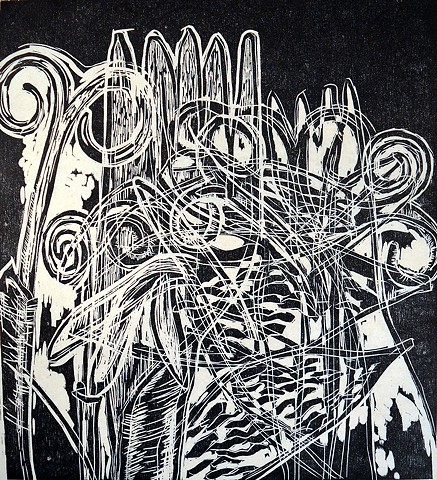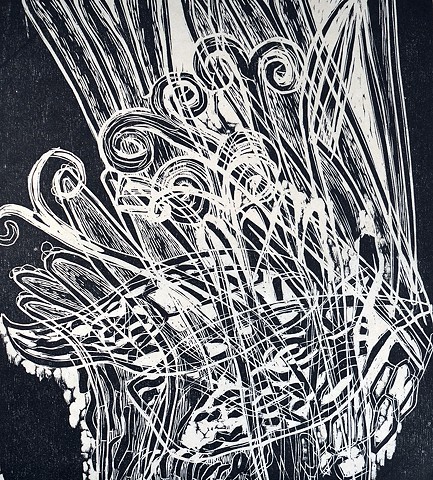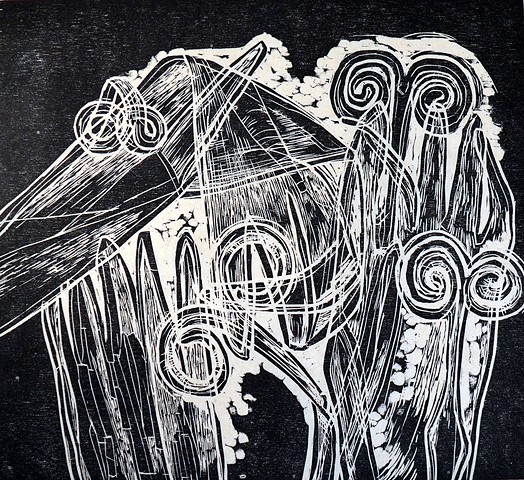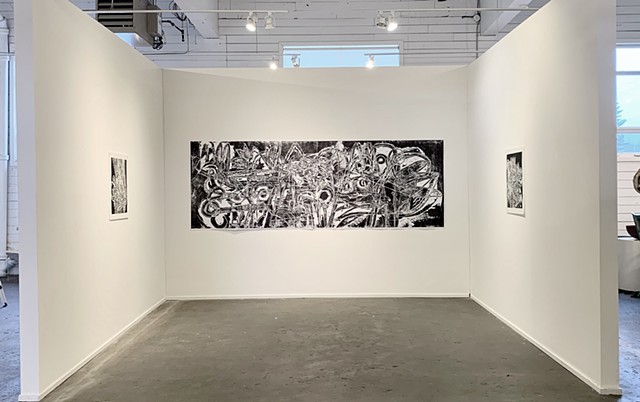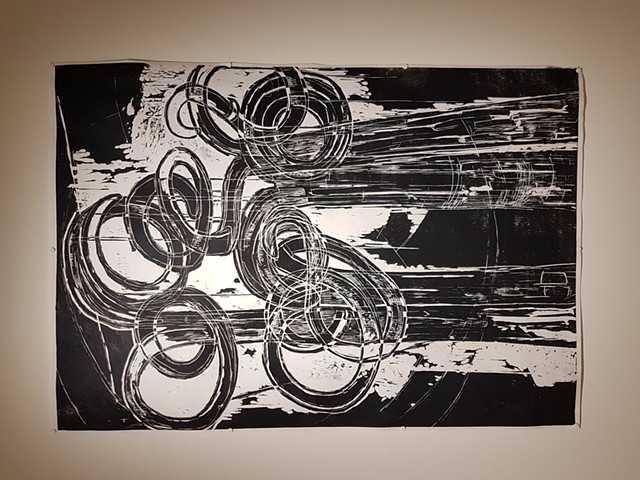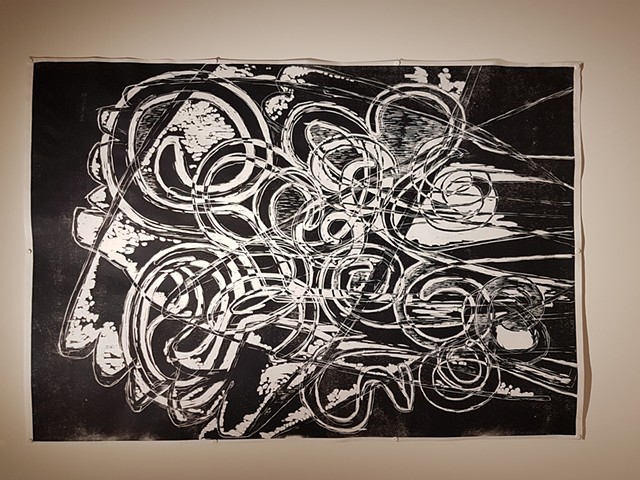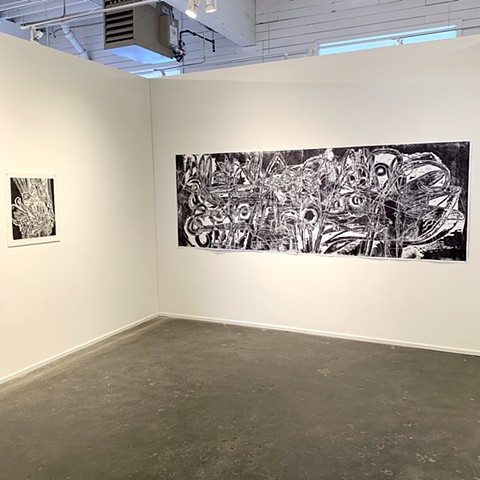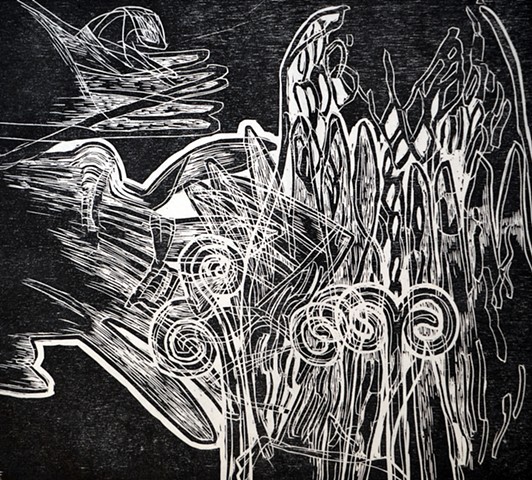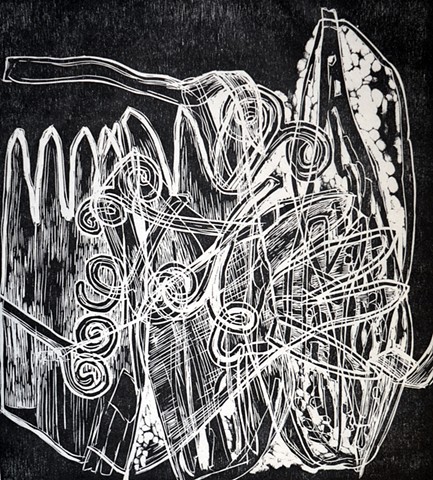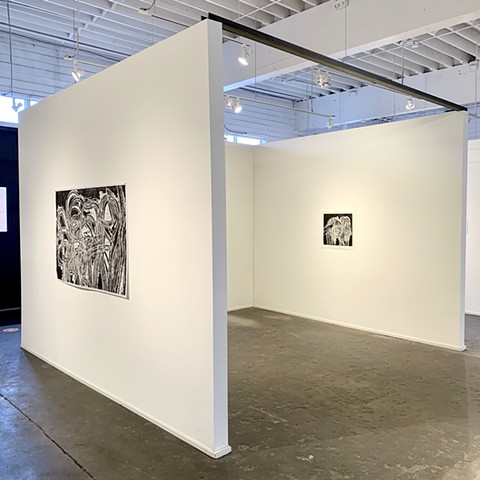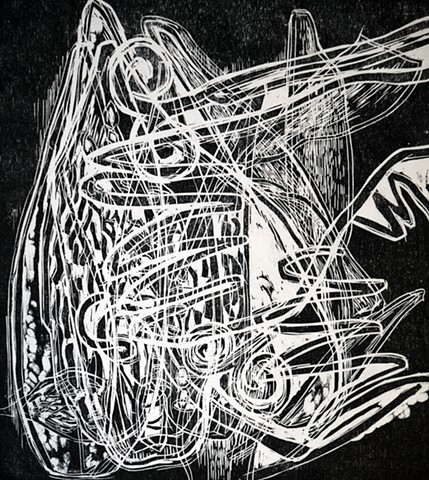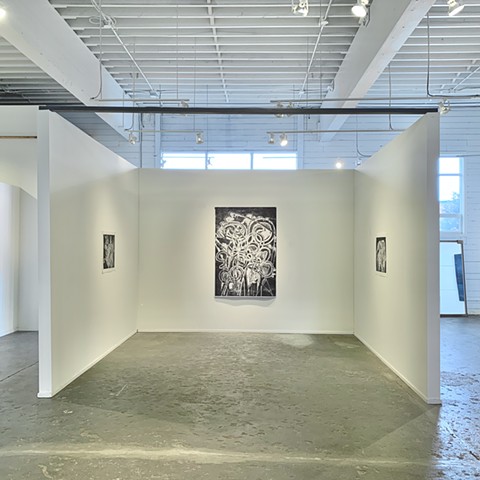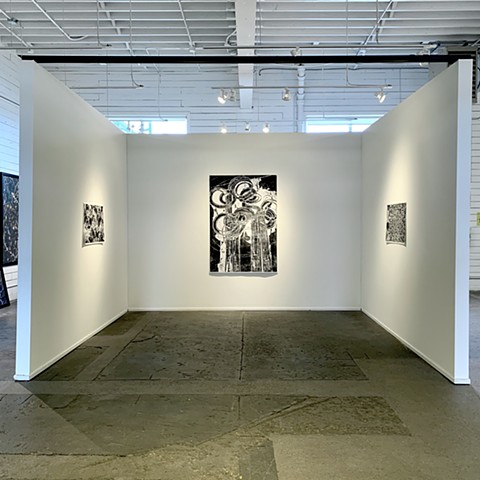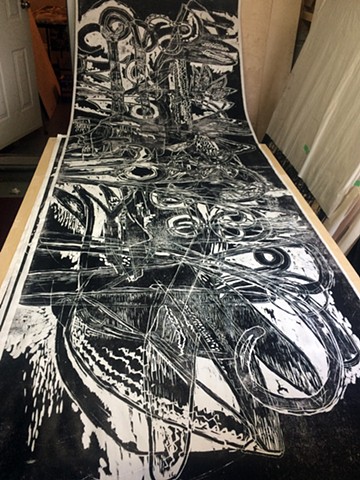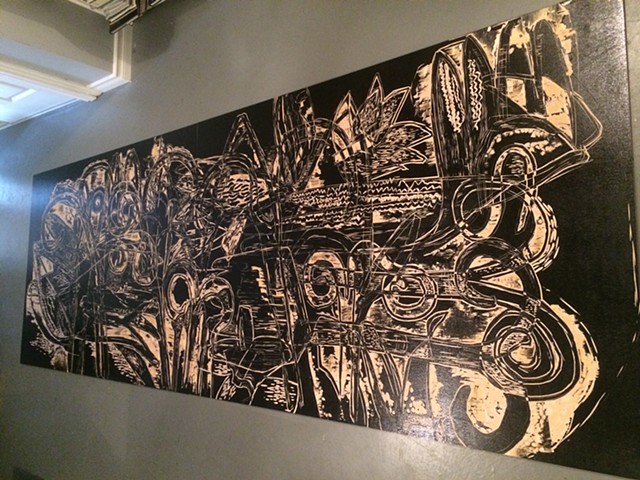Of Unknown Origin
In 2020 I completed a series of oversized woodcut prints during Covid-19 pandemic lockdowns. The Meadow, a 10-foot long print, and the body of work that I completed along with it, takes most of its visual inspiration from the “weeds” growing around my yard, since I was spending most of my time at home. Orange hawkweed is one of my favourite wildflowers: its petals range from dark red-orange to beeswax yellow, and is has the distinct floral morphology of a member of the aster family. Similar to a dandelion, each flower head of orange hawkweed is actually an inflorescence made up of numerous miniature flowers crowded together. The Meadow is an enormous interpretation of one of the many compositions of squashed flower parts that I made on microscope slides as I examined these flowers. This work is partly an ode to this somewhat maligned (for being a noxious weed) flower, and the pertinacity and wildness of plants.
I spent many hours examining these flowers under a light microscope, composing floral parts on microscope slides and squashing them together under glass cover slips. From there I would draw imagery onto my plywood with ink and brush, then carve my woodblocks. There are several abstracted forms that recur. First, the small petals of the ray florets that are evolutionarily fused into 5-lobed corollas called ligules. Second, the many tiny, curled, pollen-covered stigmas that crown the flower head, or capitulum. Third, little leaves from sphagnum mosses that accidentally showed up on some of my slides from my messy microscope workspace.
The title of this show came about when I was looking up the meaning and source of the word weed. Orange hawkweed is considered a noxious weed because it’s originally from Europe, and proliferates freely in disturbed areas. As an ecologist I know that invasive species can have disastrous ecological impacts. Throughout my biology career I’ve worked on various projects to control and destroy invasive plants in the name of biological conservation. However, I also question the language and rhetoric surrounding invasive species; alien is a term used not just for non-native plants, but also for people; the word "invasive" conjures images of armies and war. We may need to manage a species like orange hawkweed in places, but the problem starts with how we alter the landscape.
